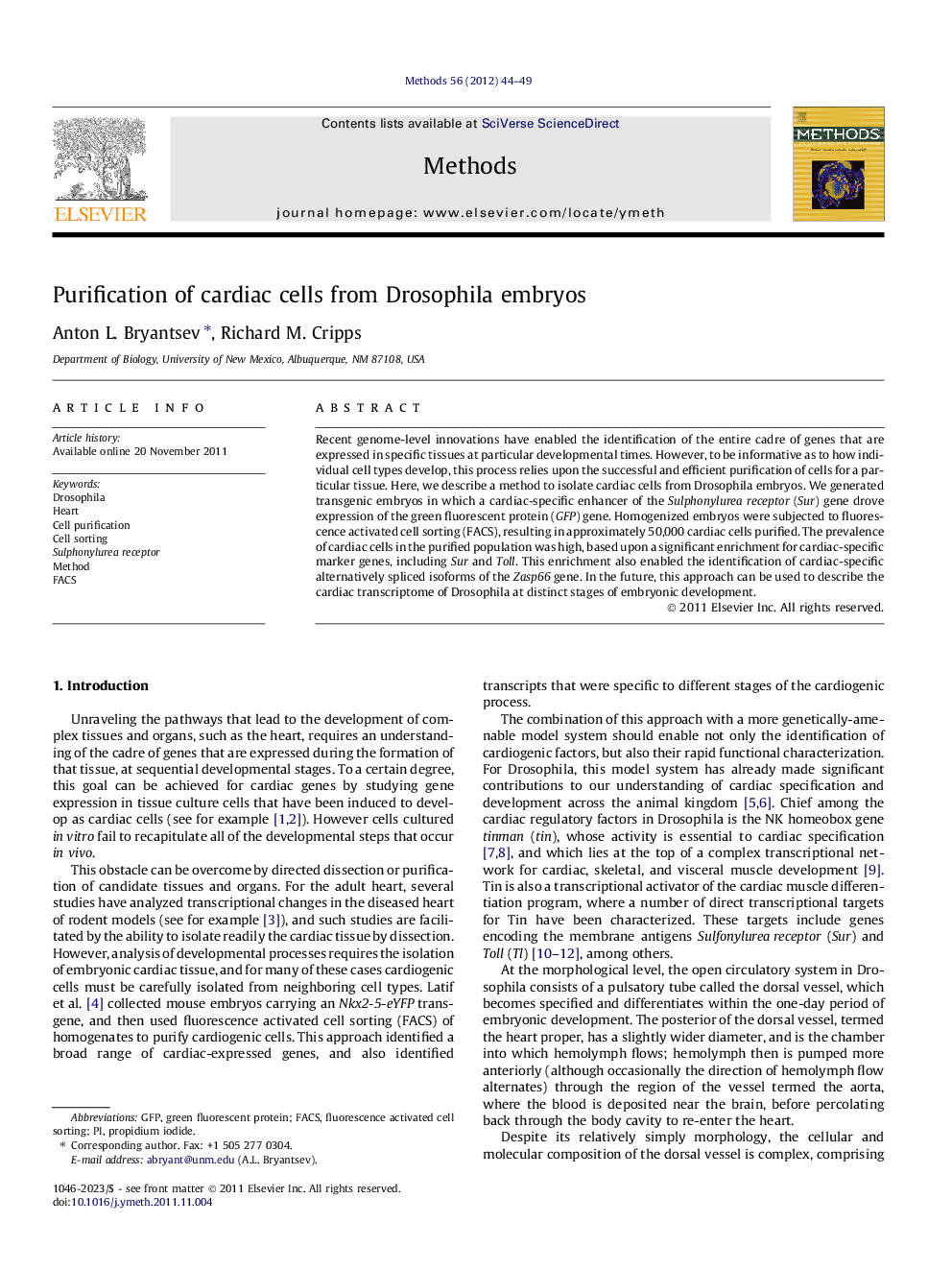| Article ID | Journal | Published Year | Pages | File Type |
|---|---|---|---|---|
| 1993784 | Methods | 2012 | 6 Pages |
Recent genome-level innovations have enabled the identification of the entire cadre of genes that are expressed in specific tissues at particular developmental times. However, to be informative as to how individual cell types develop, this process relies upon the successful and efficient purification of cells for a particular tissue. Here, we describe a method to isolate cardiac cells from Drosophila embryos. We generated transgenic embryos in which a cardiac-specific enhancer of the Sulphonylurea receptor (Sur) gene drove expression of the green fluorescent protein (GFP) gene. Homogenized embryos were subjected to fluorescence activated cell sorting (FACS), resulting in approximately 50,000 cardiac cells purified. The prevalence of cardiac cells in the purified population was high, based upon a significant enrichment for cardiac-specific marker genes, including Sur and Toll. This enrichment also enabled the identification of cardiac-specific alternatively spliced isoforms of the Zasp66 gene. In the future, this approach can be used to describe the cardiac transcriptome of Drosophila at distinct stages of embryonic development.
► A cardiac-specific GFP-expressing line was generated. ► Homogenized embryos were subjected to cell sorting to enrich for cardiac cells. ► Up to 50,000 cardiac cells could be isolated from whole-embryo homogenates. ► The purified cells showed strong enrichment for cardiac markers.
